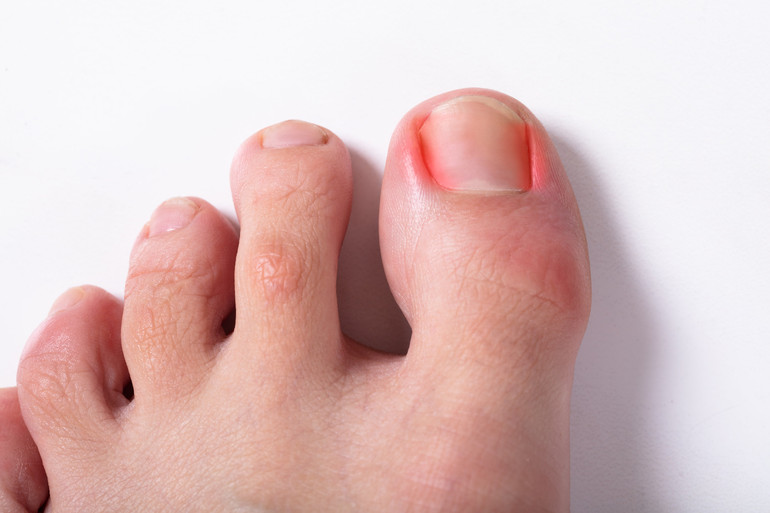The Centers for Advanced Orthopaedics is redefining the way musculoskeletal care is delivered across the region with locations throughout Maryland, DC, Virginia and Pennsylvania.
5 Reasons Why Ingrown Toenails Develop

Ingrown toenails can make every step a pain, and if you’re not smart about how you treat the problem or address the underlying factors for its onset, they can come back time and time again. Our team can help you put an end to your ingrown toenail problem, but what causes these misaligned nails to develop in the first place? In today’s blog, we take a closer look at five reasons why ingrown toenails develop and how to effectively keep them from returning.
Common Causes Of Ingrown Toenails
Here’s a look at five common causes or contributing factors to ingrown toenail onset, and some ways to prevent recurrences.
- Tight Fitting Shoes - Likely the most common culprit of ingrown toenails is ill-fitting shoes. Shoes that are too tight put abnormal stress on the toe box and the nail bed. Wear the wrong shoes too often or for extended periods, and this stress can change how the nail forms in the nail bed, causing part of the nail to grow into the edge of the skin.
- Poor Nail Cutting Techniques - When you’re trimming your toenails, you need to be mindful about how to cut and shape the nail. Many people cut the nail down too far, which can make it easier to grow back at the wrong angle, or they round the corners, which can make it more likely that as the nail fills in, the edges grow into the soft nail bed. Don’t take the nail down too far, and cut straight across instead of rounding the corners.
- Toenail Infection - A toenail infection can also lead to ingrown toenail onset. When an infection develops under the toenail, pus and other fluids can build up under the nail bed, causing it to grow at a different angle. The toenail can end up digging into your skin as it works to provide more space for the pus forming under your toenail.
- Toenail Trauma - Acute trauma to the nail is another common cause of an ingrown toenail, especially if the trauma causes the nail to partially or fully break off. Swelling and bruising of the toe can push the nail bed and cause it to grow into the skin on the toe. If your nail is partly or fully dislodged, monitor it as it grows back and wear protective but loose shoes so that there is not excessive pressure on the nail as it forms.
- Genetic Predisposition - Finally, you can also have a genetic predisposition to ingrown toenail development. Ingrown toenails themselves are not genetic, but some of the factors that make them more likely to develop are, such as nail size and shape. If you know that ingrown toenails are common in your family, be extra mindful about working to prevent them.
Preventing ingrown toenail formation really just comes down to acknowledging the risk factors and making some simple adjustments. Wear shoes that are the right size and don’t put extra pressure on your nail bed, avoid cutting the nail too low or rounding the corners, prevent and treat nail bed infections and monitor nail growth if trauma is causing swelling or nail issues. And of course, connect with a team of specialists like the ones you’ll find at The Orthopaedic Foot & Ankle Center if you’re dealing with or looking to prevent ingrown toenails. For more information, give our team a call today at (703) 584-2040.